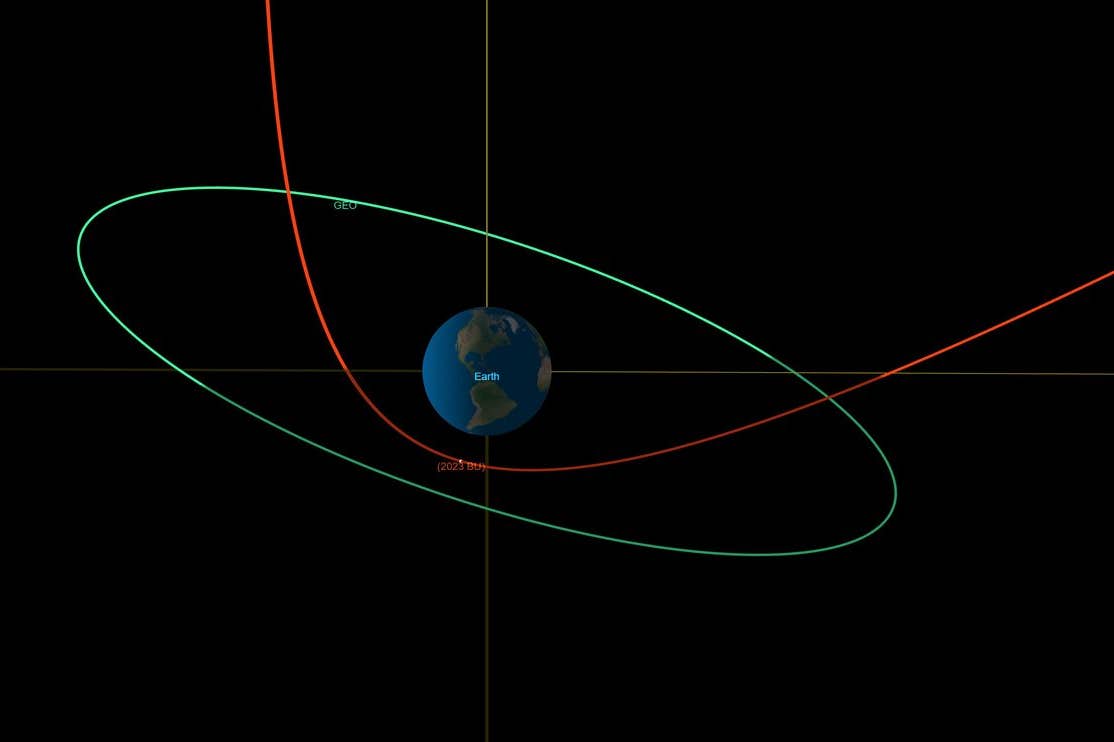Asteroid to pass Earth in one of closest approaches ever recorded
Asteroid 2023 BU will zoom over the southern tip of South America only 2,200 miles above the the planet’s surface.

Your support helps us to tell the story
From reproductive rights to climate change to Big Tech, The Independent is on the ground when the story is developing. Whether it's investigating the financials of Elon Musk's pro-Trump PAC or producing our latest documentary, 'The A Word', which shines a light on the American women fighting for reproductive rights, we know how important it is to parse out the facts from the messaging.
At such a critical moment in US history, we need reporters on the ground. Your donation allows us to keep sending journalists to speak to both sides of the story.
The Independent is trusted by Americans across the entire political spectrum. And unlike many other quality news outlets, we choose not to lock Americans out of our reporting and analysis with paywalls. We believe quality journalism should be available to everyone, paid for by those who can afford it.
Your support makes all the difference.An asteroid the size of a small truck will pass by Earth tonight, making one of the closest approaches to the planet ever recorded.
Asteroid 2023 BU will zoom over the southern tip of South America at about 12.27am on Friday, only 2,200 miles above the Earth’s surface.
It will be well within the orbit of the planet’s satellites, Nasa’s Jet Propulsion Laboratory (JPL) said.
This time it passes by only 2,200 miles from the Earth – just 10% of the distance to the moon – a celestial near miss
Experts say there is no risk of the asteroid – estimated to be 11.5ft to 28ft across – smashing into Earth.
Even if it did, it would turn into a fireball and largely disintegrate harmlessly in the atmosphere, with some of the bigger debris potentially falling as small meteorites.
Professor Don Pollacco, from the department of physics at the University of Warwick, said: “There are still asteroids that cross the Earth’s orbit waiting to be discovered. 2023 BU is a recently discovered object supposedly the size of a small bus which must have passed by the Earth thousands of times before.
“This time it passes by only 2,200 miles from the Earth – just 10% of the distance to the moon – a celestial near miss.
“Depending on what 2023 BU is composed of it is unlikely to ever reach the Earth’s surface but instead burn up in the atmosphere as a brilliant fireball – brighter than a full moon.
“However, there are likely many asteroids out there that remain undiscovered that could penetrate the atmosphere and hit the surface – indeed many scientists think we could be due such an event.”
The asteroid was discovered by amateur astronomer Gennadiy Borisov, from his Margo observatory in Nauchnyi, Crimea, on January 21.
Nasa’s Scout impact hazard assessment system has analysed the data and predicted the near miss.
While any asteroid in Earth’s proximity will experience a change in trajectory due to the planet’s gravity, 2023 BU will come so close that its path around the Sun is expected to be significantly altered.
Before encountering Earth, the asteroid’s orbit around the Sun was roughly circular, taking 359 days to complete its orbit about the Sun.
After its encounter, the asteroid’s orbit will be more elongated, moving it out to about halfway between Earth’s and Mars’ orbits at its farthest point from the Sun.
The asteroid will then complete one orbit every 425 days.